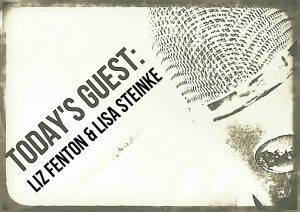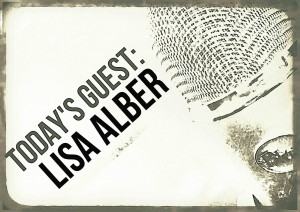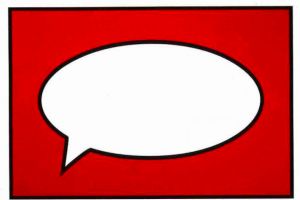Marketing
We’re pleased to introduce today’s guest Nicole Waggoner, author of the novel Center Ring, and award-winning teacher of upper-level English and Literary Criticism courses. Beyond her literary acumen, Nicole has an uncanny gift for connecting with random strangers on and offline and parlaying her new friendships into book sales. She’s here to tell us about how she does it — in a way that is not only subtle and anything but “sales-y,” but also wins people’s hearts.
You can learn more about Nicole and Center Ring on her website, and by following her on Facebook, Instagram and Twitter. Welcome, Nicole.
3 Steps to Parlaying Random Encounters Into Book Sales (Without Being Pushy)
Imagine you’re standing in line at the post office. You’re tired, but definitely not as tired as the lady with two fussy kids directly behind you. You’ve been there, and it’s not pretty. So you offer to let her cut in front of you.
The next night you’re in line at the movie theater concession line, waiting to see Star Wars: The Force Awakens. You strike up a conversation with a man who also has tickets to see the movie. You share some laughs over the franchise’s reincarnation.
You may think these random encounters may sound like nothing but inconsequential connections, here today and gone tomorrow. And it may seem they have nothing whatsoever to do with writing or books. But quite the opposite: for me, each one has turned into an opportunity to sell books.
As a recently published debut author, I know the feelings that accompany the many stages of the publishing process all too well. After years of hard work and waiting followed by the uncontainable excitement of getting to hold a final copy of the novel in your own hands at last, the biggest, most nerve-wracking question sets in: will anyone actually buy it?
You may not think that connecting with random strangers would make for a great sales strategy, but this grassroots approach has worked like a charm for me. Without realizing it at first, I built up a method for steering unplanned conversations toward Amazon shopping carts without being predatory or feeling in the least bit slimy.
Over time, I honed it and began to call it my “Simple, 3-Pronged Intro-Pitch-Sale” approach.
Here’s what it looks like:
Read More
“What can I do to get my book onto a bestseller list?”
If I had a dime for each time an author has asked me this question, I wouldn’t need to be a bestseller myself to be rich. Until recently though, my answer has always been a disappointing, “I have no idea.” Or, “There’s nothing anyone can do.”
Then I had a fascinating conversation with the team over at Greenleaf Book Group, an independent publisher and book distributor. Greenleaf not only helps develop ideas into books which they then publish, promote and distribute they also also work with qualifying authors to make that bestseller list dream come true. And they’re successful at it.
What I learned was so eye-opening that I’ve invited Greenleaf marketing associate Magdalene Thomas to talk with me about strategies for reaching those bestseller lists in a Q&A here on Writer Unboxed. Magdalene’s work planning and executing strategic marketing campaigns with independent authors has resulted in numerous bestseller placements.
Welcome, Magdalene. Let’s dive in!
SB: When I heard that there are actually steps authors can take to help their books hit bestseller lists, I had to hit the universal reset button. Is it true?
MT: Yes, there really are steps that certain authors with the serious goal of becoming bestsellers can take. They primarily involve controlling volume and velocity of sales.
SB: That sounds so easy. What’s the rub?
MT: Every time I develop a marketing campaign for one of the many authors I work with, I ask: “What are your goals for this book?” Nine times out of ten, their response is some iteration of “I want to have a best seller.”
As someone who is acutely aware of the realities of placing on a best-seller list, I have to take a deep breath before I respond. Hitting a bestseller list is the ultimate validation of an author’s time, emotion, energy and ideas. Yet planning for this takes resources and the outcome is not guaranteed. So even though I can help my authors take the necessary steps, I also have to help them set expectations and encourage them to set more realistic goals.
There is a time and place for marketing campaigns focusing on high-level bestseller lists such as The New York Times. That type of campaign is not right for every book and author. Luckily there are also other types of bestseller campaigns that are more accessible, like on Amazon. It’s important for authors to assess which if any of these are best given their specific situations.
SB: What situations lend themselves to working toward placement on national bestseller lists like the New York Times or Wall Street Journal?
MT: A push for placement on a third-party best-seller list like The New York Times works best if you have an existing audience that is primed to purchase your book as it hits shelves.
These best-seller lists are determined by sales numbers within a
Read MoreThis post is not about what content to include in a query letter, it is about how it should ‘sound’–the professional tone the letter should take. It discusses how to address an overburdened agent, editor, or publisher in a manner that makes them consider you a potential business partner, not a supplicant, a novice, an egomaniac, or desperate. That increases the chances that your query letter will actually get read, perhaps even all the way through.
In my day job, I work with a researcher who gets dozens of unsolicited email requests daily—for a job, for a position, for help, for collaboration, for reviews, for submissions, for purchasing equipment, for endorsements, for public appearances. While these inquiries are not quite the same as author queries, after wading through mountains of these unsolicited requests on a daily basis, I’ve developed a short checklist about what to do and what not to do in basic letter-writing terms to keep your message from getting immediately rejected. If some of the suggestions I am about to offer seem commonsense, or even ludicrously obvious, all I will say is that I have abstracted all of the examples of what not to do from actual received inquiries.
Put Yourself in Their Shoes:
The goal of the query letter is not to tell the addressee what you want or need; the goal of the query letter is to convince the addressee why they might want to work with you. Don’t write about how badly you want to be a writer/make a living as a writer/become a bestseller/change the direction of literature. Lots of us want that (LOTS!). Stating it in a query letter simply puts extra social pressure on the reader, which does not increase the desire to continue reading.
First Sentences/Paragraphs.
The decision of whether or not to read a letter all the way through happens within seconds. The opening should sing, better than the fat lady ever did, and in your voice. The first sentences determine whether any more of the letter gets read. The first paragraph establishes whether you have done your research, are professional, would be someone interesting (and sane), someone who might be a good collaborator, and whether you can pitch your work, not your dreams.
Read More
Photo by George A. Spiva Center for the Arts
There is no such thing as the “average reader.”
I usually see references to this mythic creature — the average reader — in one of two contexts.
First:
“I’m going for mass market appeal — I think the average reader would enjoy my book.”
Second:
“Well, the average reader obviously doesn’t know what good writing is. Why else would they buy crap like (popular bestseller)?”
I’m going to tackle these two usages separately.
The myth of the “mass market” average reader.
Readership is not monolithic. In this day and age, there really isn’t a mass market consumer, and very few mass market products. Commodities like flour and milk are split into more and more specific categories: whole wheat, unbleached, gluten-free, 2%, 1%, lactose-free, organic, goat, cow, almond, soy, etc.
So how could something as subjective as reading taste be considered “mass market”?
Yes, you’ll have some FOMO (Fear Of Missing Out) readers, who are jumping on the bandwagon, only because they want to discuss what everyone seems to be reading. But with the plethora of entertainment choices out there, reading isn’t necessarily the water-cooler discussion point it used to be. (Come to that, there aren’t really water-coolers that people chat around. Break room discussion? Facebook discussion?)
This isn’t something to bemoan. This is not a cultural commentary, and quite frankly, I am not going to waste time making a judgment on a nostalgic “mass market/higher reading” audience. This is the reality we are working with. Story comes in a lot of forms. There are simply more options than there ever have been before, and we have got to stop being so precious about it if we hope to create a sustainable living from it.
The days of demographics.
Demographics are the segmentation of a group of people by factors like age, ethnicity, race, religion, income, and education.
In the earlier days of marketing, any consumer description was couched in demographics. For such-and-such a product, they might describe the ideal consumer as:
Woman, 30-40’s, married, household income of $60k, lives in suburbs.
The assumption is that people of the same gender, marital status, income, etc. would have the same tastes, the same interests. More importantly, they could be reached by the same marketing techniques (which, at the time, were “push” promotion, spread through heavily controlled, one-way mass media.)
The rise of psychographics.
As people started connecting in new ways with increased and easier communication options, and sales of products became easier and more global, it became clear that simple demographics weren’t as effective as they used to be.
For example, the original assumptions of the rise of the romance genre was that it was mainly read by suburban housewives of lower education and household income, so marketing should appeal to that supposed “demographic” by referencing things like “when you need a break from the kids!” or literally marketing them like bleach or other household products, emphasizing similarity and brand over individual authors.
While this worked incredibly well for a while, the “category romance” has been in documented decline for the past decade, as their audience is, essentially, dying out. It’s simply easier to get exactly what you want now, rather than settling for a limited range of “commodified” genre offerings. The success of re-tooled category romance has come from the increased sharpening of focus by category lines and the diversification of […]
Read MoreWhen a novel becomes a bestseller it is sometimes as much of a mystery to the publisher as it is to the author. While some books have a strong clear push from the powers that be, occasionally a book catches the wind in its sails and makes its ascent for reasons unknown.
I asked a collection of bestselling authors to select their best selling novel, and try (if possible) to account for the success of the book. I had hoped to find clear (reproducible) patterns, but not only were the answers varied, the authors often qualified their replies with disclaimers about being unsure. Here, in no particular order, are their responses.
ORPHAN TRAIN, Christina Baker Kline
THE ILLUSION OF SEPARATENESS, Simon Van Booy
THE WIFE, THE MAID, AND THE MISTRESS, Ariel Lawhon
Read MoreCan you imagine getting more than 18,500 preorders for something you create? Today I want to talk about what it took for one author to do just that — attract 18,500 preorders prior to the release of a new book.
Imagine that…
… for your book.
… for your art.
… for your craft.
… for your business.
… for anything creative you are launching.
That you receive so many preorders it guarantees you success.
Okay, the context of this is one author — Michael Hyatt — but I’m actually going to spend very little time talking specifically about him. Why? Because he had a team of people working on his launch, plus a co-author.
Michael’s latest book, co-authored with Daniel Harkavy and titled Living Forward, was just released. Yes, it’s nonfiction, but the points below apply to all types of books, and many other forms of launches, whether it is a business, art or something else.
Earlier this week, Michael’s head marketer, Chad Cannon, shared a post about their book launch. I want to share highlights below, and really dig into several key elements that are critical for you and your work.
Read MoreOur guest today is Lisa Alber, a Hibernophile whose first novel, Kilmoon, was nominated for the Rosebud Award for best first novel. She is the recipient of an Elizabeth George Foundation writing grant and a Walden Fellowship, and was recently included in the bestselling anthology, Eight Mystery Writers You Should Be Reading Now. Lisa lives in Portland, Oregon, but later this month she’s off to Ireland, where she’ll probably drink too much Guinness—all in the name of novel research, of course! Her second novel, Whispers in the Mist (August 2016, Midnight Ink) is available for preorder.
Anything to do with marketing, publicity, and self-promotion can be overwhelming. Most of us would like to be left alone to, well, write. I like to hear other writers’ tales from the promotional jungle, especially when there’s a new idea that might resonate with me and be fun at the same time. We can’t do everything, but it’s good to know what options are out there. Thought I’d share what I’ve recently experienced.
Connect with Lisa on her blog, on Facebook, and on Twitter.
Exploring the Rule of Seven
I have a theory about self-promotion. Namely, that we throw as many things out there as we can—Facebook viritual parties, guest blog posts, bookmarks, and so on—in hopes that something sticks. Please, we say to ourselves, let my name magically propagate through the hoards of readers out there who I know would love my novels.
I’ve heard it said by “experts” that our names don’t stick in readers’ heads until they’ve been exposed to it at least seven times. Seven! I don’t know who these so-called experts are, and I’m convinced that no one knows what truly works at any given time, for any given author, but I’m open-minded. I’m willing to toss my name into the literary grab bag over and over again.
The rule of seven has become official enough to have a Wikipedia page—I kid you not—and an official sounding theory associated with it: “effective frequency.” As with any unprovable theory, this one has caused some controversy. How many exposures constitute the optimally correct number? Is it really seven?
Not long ago, I realized that in the past year, I’d been invited to participate in three joint book promo-y projects, which struck me as interesting and perhaps “a thing” that’s going on at the moment to help us land our optimally correct number of exposures. I call it “hive mind self-promotion.”
So what am I talking about exactly?
Read MorePlease welcome Greer Macallister, author of historical suspense (The Magician’s Lie), to Writer Unboxed as a regular contributor! We’re thrilled to have her with us.
My debut novel, The Magician’s Lie, was released in hardcover almost a year ago, on January 13th — the very same day as another debut: Paula Hawkins’ thriller The Girl on the Train.
Since then, The Girl on the Train has sold 4 million copies. The Magician’s Lie… has not.
Why and how does a book catch fire? It certainly helps to have a publisher giving the book a full-court press, as Riverhead did with Girl, but there have been plenty of debut novels positioned just as carefully, and funded just as generously, with nowhere near the results. (If you’ve read The Gargoyle, the ‘It Novel’ of 2008, please raise your hand.)
We all go into this business hoping our book is going to be The One. It almost never is.
We get the luck we get.
Not that I consider myself unlucky. Quite the opposite. While The Magician’s Lie hasn’t sold 4 million copies, it has done quite well — excellent reviews, good sales figures, flattering honors. And it’s passed the ultimate test for most writers: it’s done well enough for my publisher to buy my next book.
Much of that, like much of Paula Hawkins’ success, is luck. It landed on the right person’s desk on the right day. The readers at Target liked it enough to make it a monthly Book Club Pick. The guest judge at Book of the Month chose it as a main selection, and that guest judge happened to be Whoopi Goldberg. If it had come out in a different month, or if there had been different people making these decisions, my luck would have been different. Bad instead of good. Or not even bad, just nonexistent.
Which is why I tell writers: Take your luck. But I also tell them this: make your luck.
There is so much in this business we can’t control. But there are certain things we can. We can make each book the best it can be. We can seek the advice of experts and build the right team — everyone from agents and editors to beta readers and booksellers — to get a very good book into the hands of as many people as possible.
And if good luck comes your way, you have to help build on it. Tackle the edits. Do the interviews. Move heaven and earth to go on the tour. Spread the word any way you can. Say yes, say yes, say yes.
Four-leaf clovers, like anything else green, die without water.
Read MoreYour manuscript is finished and the agent submissions checklist is all set:
Or perhaps you’ve decided to self-publish and everything’s ready, including a cover designed around a gorgeous image you’ve found that perfectly captures the spirit of your book.
It’s time to pull the trigger.
But wait. Isn’t something missing?
If either your querying materials or your self-published cover do not include blurbs, then yes: something’s missing. Something you absolutely can’t proceed without.
Quick primer in case you’re not familiar with this quirky term:
A “blurb” is that little snippet of praise from another author or a reviewer brandishing a book’s cover. Think, “Immensely readable. From small town to the grit of the city, family farm to union factories, the Midwest of Michelle Hoover’s Bottomland is alive with secrets, hard choices, and the acute costs of independence.” —Daphne Kalotay, author of Russian Winter and Sight Reading
Or, “Half in Love With Death is a suspenseful psychological thriller and a mesmerizing coming of age story. I raced to find out what happened, yet longed to linger with this rich cast of characters and Emily Ross’s stylish prose. This haunting story of a teen girl’s search for her missing sister, served up with plenty of plot twists, will excite YA mystery fans.” —Diana Renn, author of Tokyo Heist, Latitude Zero and Blue Voyage
These well-crafted snippets not only showcase readers’ praise of a book, but they also serve a very important purpose long before a book is marketed or promoted:
At every phase of the game, blurbs offer a crucial layer of vetting.
In an industry where where no specialized training or prior experience is required to go knocking on agents’ or editors’ doors, blurbs help distinguish those writers who’ve done their homework by seeking critiques from others more experienced than themselves. They also demonstrate that a manuscript has gone through the requisite rounds of revisions and rewriting and is at the point where a published author can read it start to finish and approve.
Read MoreThe transformation of publishing as a result of the proliferation of e-books and self-publishing is an inescapable topic these days. As well as making every writer face the devil’s choice of whether to go traditional or go independent, this transformation has also created a new spinoff industry–you—the writer and author. Providers of author services are a growth sector of the economy.
As the director of advertising on Writer Unboxed, I’ve been thinking about how the development of author services further changes the job of being an author, adding responsibility for being an educated consumer of those services, but also what it means for blog owners.
Writing advice and advisors have always been around, but now, as well as ‘how-to write’ guides, there are DIY manuals for designing your own cover, formatting your own book, editing your own book, managing your own promotion. If you don’t want to go the full DIY route, you can buy a bunch of author-targeted software or you could hire some help–book cover designers, editors, book promoters, book formatters, packaging agencies, book advertisers, booksellers, marketing advisors, story ‘doctors’, indexers. The list could go on.
Many of these services have existed for a long time, but the providers traditionally worked directly with publishers. Some of these services are brand new, a product of the new e-book revolution.
All of them would like to gain your attention. Yes yours, because you, dear Writer Unboxed reader, are their niche market. Their intended clientele. Their bread and butter. And, yes, sadly, in some instances, their mark.
As with any industry, many of these service providers offer a valuable service and expertise, care about their reputation, and operate according to above board business practices. As with any industry, where there is money to be had, some of the service providers are out for the money. By whatever means they can get it.
Gaining your attention, let alone your patronage, is not easy. In a business where the standard legend is that all it takes to get published (and make millions) is to crank out some content, generate a file, and put it up for sale at one of the on-line booksellers, these author service providers not only have to reach their prospective clientele, they have to convince them that hiring a service provider is more valuable than DIY’ing it. Most people know when they need a lawyer. Not everyone knows when to hire a developmental editor, content editor, copy editor, or proof reader. Whether to hire a book packager or software that will generate the proper format for an ebook ‘automatically’ is equally unknown. That means even legitimate service providers have to be aggressively persuasive about the need for their services. That can make their promotional tactics more extreme–promising more for less or using gimmicks to get the prospective client’s attention.
For the author, this makes it absolutely critical to do due diligence before hiring any service provider or buying any service product. Ask for referrals from previous clients. Ask for a sample of work before you buy the whole package. Be clear about what services are and are not being provided. Advertising is a means of getting your attention, it is not a contract, a promise, a certainty.
Writer Unboxed is front and center […]
Read More
I recently stumbled across something called Parkinson’s Law. Originally expressed in a humorous essay published in the mid-1950s, this law states that “work expands so as to fill the time available for its completion.” The author, Cyril Northcote Parkinson, based this observation on his experience in the British Civil Service, and he intended this “law” to be interpreted as satire, poking fun at the highly bureaucratic manner in which his government coworkers functioned.
This law became popularized in recent years by Tim Ferriss, a self-described “human guinea pig” who rose to prominence with his best-selling book, The 4-Hour Work Week. In that book, Tim embellished Parkinson’s original language a bit, stating that “Parkinson’s Law dictates that a task will swell in (perceived) importance and complexity in relation to the time allotted for completion.”
But Tim wasn’t being satirical. A notorious “life-hacker” who is always looking for ways to do things faster, better, and easier, Tim is a big advocate of minimizing the time he allots to specific tasks. He emphasized Parkinson’s Law in his book, because he feels that when it’s accepted passively, it’s a mindset that works against us, making us far less efficient.
NOTE: Before I go any further, this article is *not* an endorsement of Tim Ferriss and his ongoing “life experiments.” I find him a very intelligent and intriguing person, but I also find some of his opinions and ideas to be… well, I guess “batshit crazy” is an apt term. But he’s definitely a thought-provoking guy, and I think the world is richer for having such an articulate and outspoken presence within the Zeitgeist. And I do think Tim makes some powerful points, some of which I’ll share in this post.
Parkinson’s Law and heavy drinking
I’ve definitely witnessed both the good and the bad sides of Parkinson’s Law. I have an old friend I’ll call Dave, an extremely talented guitarist who built an elaborate recording studio in his home. A very creative guy, Dave would spend countless hours working on original songs, some of which I played drums on. But I noticed he would get so caught up in making small tweaks to the parts he’d recorded, that he hardly ever actually finished a song.
The most extreme example of this was when I saw him after about a five-year hiatus during which our paths had not crossed. After exchanging some enthusiastic greetings, Dave said, “Keith, you gotta hear the latest version of that song you played on the last time you came over to my house. I just added some really cool parts to it, and it’s really coming along nicely!”
In nearly five years, my friend hadn’t yet finished a three-minute song that I’d frankly forgotten about. This was definitely a case of a task expanding to fill the time allotted to it – which in this case was all the time in the world.
Read More




















